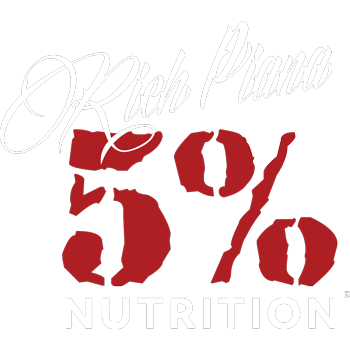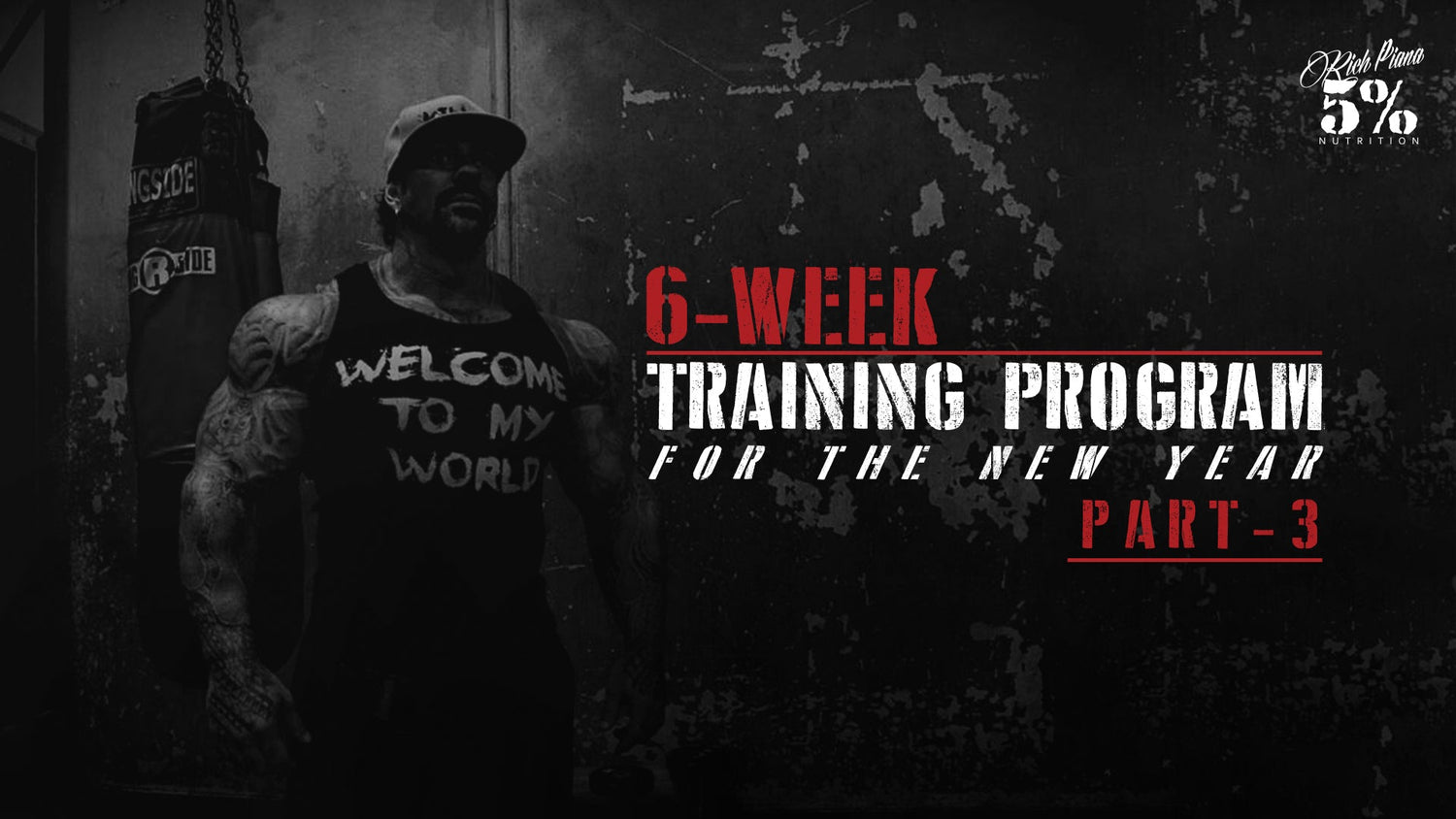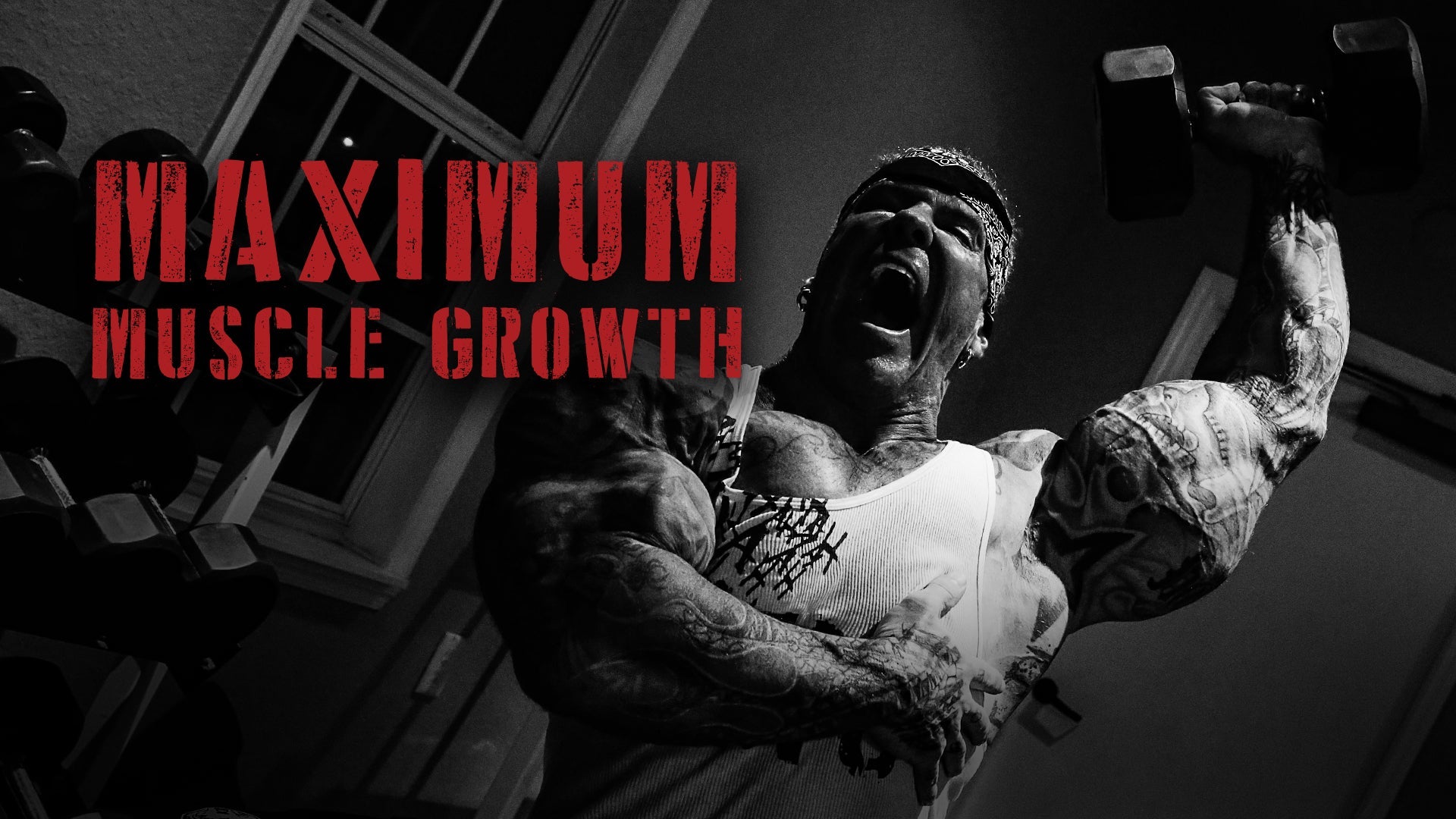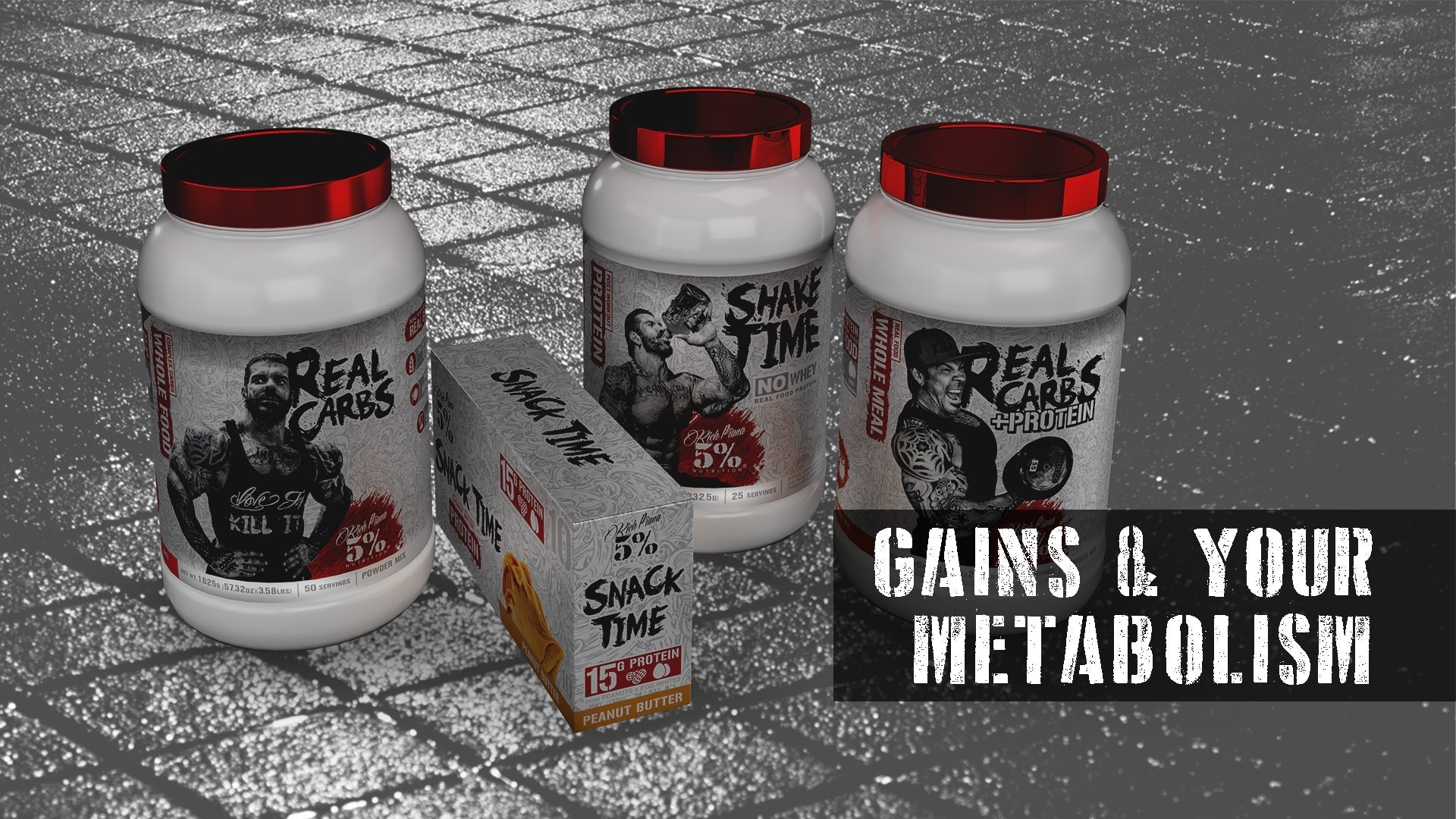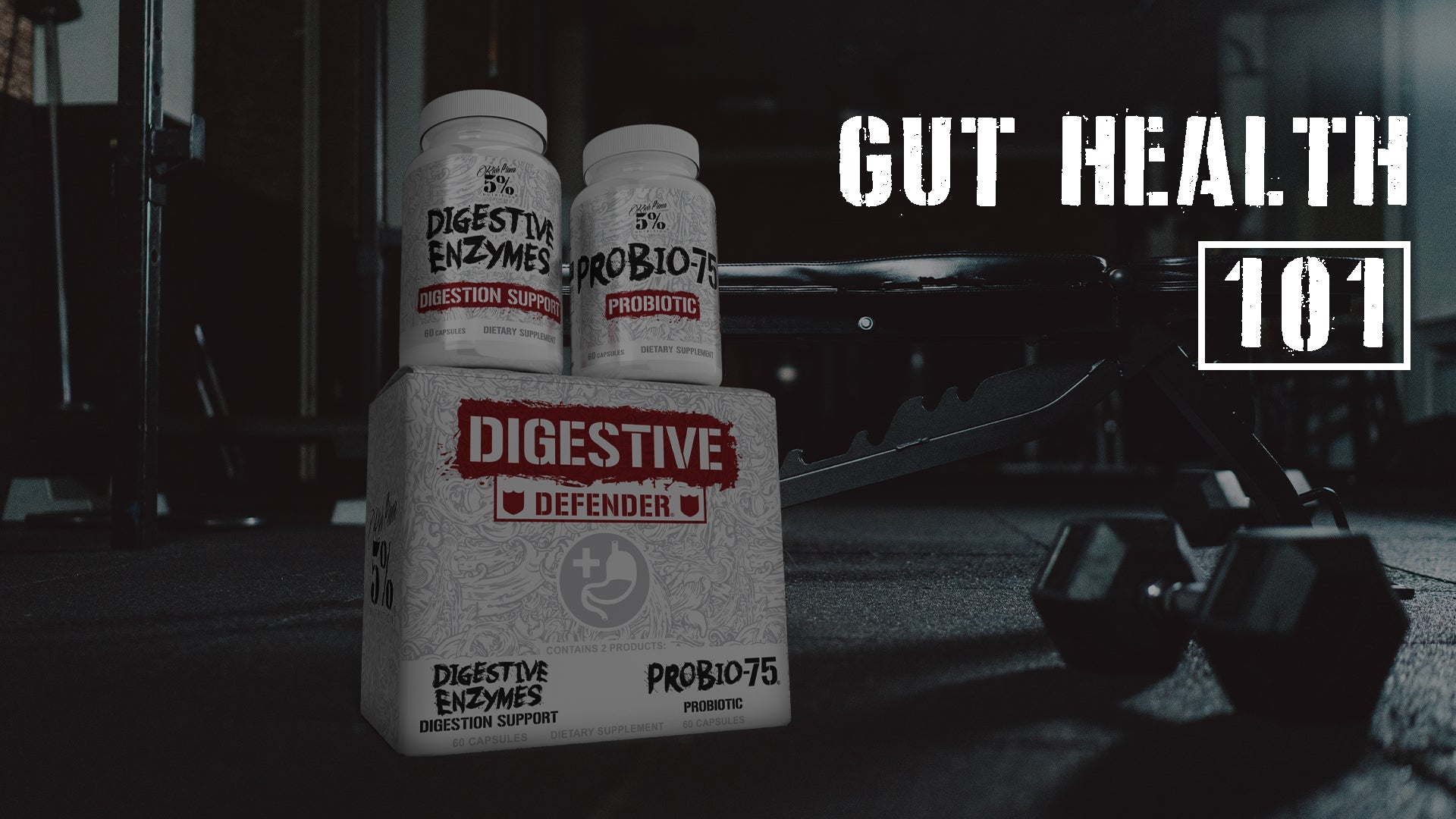In Part 1, we began with a basic full-body routine. We also cut our sugar intake by 25% as well as learned about 5% Nutrition’s potent Shred Time and All Day You May Shred. Then in Part 2, we discovered why sugar should be avoided. In Part 3, we’ll cut sugar by another 25% and set our calorie/macronutrient requirements. Besides that, we’ll learn how to build our own 5% stack, and enjoy some great savings in the process! Finally, we’ll move to Phase 2 of our routine. Let’s get rockin'!
Workout Plan: Phase 2 (Week 3 Supersets!)
This is a full-body routine using supersets. Limit rest between supersets to 30 seconds or less, and no rest between exercises. You will use 75% of your 1RM. So, using our Bench Press example from Part 1, if you were using 97 lbs, now you’re using 104 lbs (139 estimated 1RM x .75 = 104).
Cardio - 30 minutes on the machine of your choice. This should be easy for you.
Dynamic Warm-Up
| Jump Rope x 20 |
| Jumping Jacks x 20 |
| Bodyweight Squats x 15 |
| Bent Torso Twists x 10 |
| Shoulder Circles x 10 |
Superset #1
| Leg Press |
|---|
| Leg Curls |
|---|
| Warm up over 2 sets - perform your warm-up sets as supersets |
| 20% Of Your Working Weight x 15 reps |
| 40% Of Your Working Weight x 10 reps |
| Supersets: 3 x 12 reps each exercise |
| Do 12 reps of each exercise in the superset. You should not be able to complete another rep. That’s true for every superset in this routine. If you find you can do more reps, increase the weight. |
Superset #2
| Seated Row |
|---|
| You can use a machine or a low pulley cable. |
| Lat Pulldown |
|---|
| Perform your warm-up sets as supersets: |
| 20% Of Your Working Weight x 15 reps |
| 40% Of Your Working Weight x 10 reps |
| Supersets: 3 x 12 reps each exercise |
Superset #3
| Chest Press |
|---|
| You can do the barbell bench press or use a machine. |
| Incline Dumbbell Flys |
|---|
| Perform your warm-up sets as supersets: |
| 20% Of Your Working Weight x 15 reps |
| 40% Of Your Working Weight x 10 reps |
| Supersets: 3 x 12 reps each exercise |
Superset #4
| Shoulder Press |
|---|
| You can do these seated or standing and use a barbell, dumbbells, or a machine. |
| Side/Rear Laterals |
|---|
| Do this as 1 exercise |
| Supersets: 3 x 12 reps each exercise |
Superset #5
| EZ Curls |
|---|
| EZ Extensions |
|---|
| Supersets: 3 x 12 reps each exercise |
Superset #6
| Standing Calf Raises |
|---|
| Seated Calf Raises |
|---|
| Supersets: 3 x 25 reps each exercise |
Superset #7
| Hanging Leg Raises |
|---|
| Side-to-Side Crunch |
|---|
| Supersets: 3 x 20 reps each exercise |
Superset #8
| Reverse Crunch |
|---|
| Ab Wheel |
|---|
| Supersets: 3 x 20 reps each exercise |
Performance Notes
If you need to, add more cardio: 30 minutes of the cardio of your choice to be done on any 2 off days.
As far as rep performance, use the following tempo: 2-0-6. That’s 2 seconds up, no pausing at the top, and a slow 6 seconds down. On the last rep of an exercise, hold the fully stretched position for a 15-count.
Nutritional Guidelines
In Part 1, we dropped sugar intake by 25%. It’s time to drop it another 25%. Of course, calories will drop along with it. As noted in Part 1, keep your protein intake high (1 to 1.25g per lb of body weight), and space it throughout the day. This drop in sugar and calories, combined with your cardio and workout routine, will force greater fat loss.
If you find you’re not losing fat, cut complex carbohydrates. You should think in terms of 1.5g complex carbs per lb of body weight. You can cut this down to 1g per lb as needed.
Here’s an example list of foods.
Protein
Lean beef, chicken, turkey, fish, low-fat dairy, 5% protein powders. If you choose plain Greek yogurt, make sure it has a sugar content of 6g or less per serving.
Carbohydrates
Complex carbs: Whole grains, oatmeal, yams, and brown rice. Simple carbs: Fruit such as bananas, pears, apples, and oranges. The Glycemic Index (GI) is a guide that tells you the absorption rate of carbohydrate foods. It uses pure sugar as the baseline. The lower the number on The GI, the healthier the food. For example, a rating of 55 or less is low GI, a rating of 56 to 69 is medium GI, and anything higher would be high GI. (1)
Fats
Flaxseed, sunflower seeds, canola oil, olive oil, almonds, and peanuts. Fat consists of building blocks called fatty acids, which fall into 3 main categories: saturated, polyunsaturated, and monounsaturated. Most foods are a combination of all 3 fatty acid types, one type is usually the dominant type which dictates its classification. (2)
Saturated - Found in products such as whole milk, cheese, beef, pork, and ham. Also, oils such as coconut, palm kernel, and vegetable shortening. The liver uses saturated fat to make cholesterol, which is involved in hormone production (such as testosterone). This is important - you need some fat in your diet to keep your body's hormone production where it should be.
Polyunsaturated - Found in corn, soybeans, safflower, and sunflower oils. Some fish oils are also high in polyunsaturated fats. This type of fat may help lower total cholesterol.
Monounsaturated - Found in vegetable and nut oils, such as olive, peanut, and canola. They can help lower LDL, or bad cholesterol without lowering HDL, or good cholesterol.
Trans-fat - These are polyunsaturated oils altered through hydrogenation. That’s a process used to harden liquid vegetable oils into solid foods like margarine and shortening.
Keep A Diet Journal
Or use software that helps you track what you’re eating. Should you track everything? It’s not absolutely necessary, but it makes a big difference. At the least, you should track protein grams and sugar intake. If fat loss is a problem, track complex carbs and fat.
Your Daily Calorie Requirements
The easiest way to determine your daily calorie intake is to multiply your body weight by 13. So, if you weigh 200 lbs, that’s 200 x 13 = 2600 calories. No, it’s not high tech, but it’s fast. Now, let’s match it up to our protein and carbohydrate requirements. Our suggested protein grams are 250 (at the high end) and carbohydrate grams are 300.
Here’s our calculation: 550g x 4 calories per gram = 2200 calories. That means 400 calories, or 44g, can come from fat.
This is a starting point that takes all your macronutrients into account. If you aren’t losing 1lb of body fat per week, cut 250 calories from carbs and fat, never from protein. Consequently, if you are losing more than 2 lbs per week, add 250 calories from protein and complex carbs to slow it down. Why would you want to slow it down, you might ask? Because if you’re losing weight too fast, you’re losing muscle along with fat. Big mistake when you’re a bodybuilder!
5% Nutrition Supplement Suggestions
Introducing “Build Your Own Stack”
Now you can create the perfect Stack! If you’re an intermediate or advanced bodybuilder or athlete, you can tailor your Stack to your specific needs, while still following our 6-Week Training Program! Maybe you want a stronger pre-workout or even more pumps! Perhaps you want more mental focus or more natural muscle builders. Now you can build your Stack your way and save big in the process!
See it here: Build Your Own Stack | Save 20% OFF – 5% Nutrition (5percentnutrition.com)
Here are some suggestions for when you build your own stack with our stack builder:
Stack Any 3 to Save 15%
For example:
All Day You May Stick Packs, Freak Show, Shred Time
OR
Freak Show, All Day You May Shred, Kill It
Stack Any 4 to Save 18%
For example:
Liquid L-Carnitine 3150, All Day You May Shred Time, Kill It, Full As F*ck
OR
Shred Time, Freak Show, Real Carbs + Protein, Full As F*ck
For example:
Freak Show, Kill It, All Day You May Shred, Crea-TEN, Hydrate Stk
OR
Shred Time, All Day You May, Full As F*ck, Shake Time, Digestive Enzymes
Stack the Core Linup to Save 20%
In case you missed them, we also have a subline dedicated completely to augmenting your existing supplementation or providing you with your starter pack of supplements for those just beginning a training program. Plus, now you can save 20% when you select any 4 products.
For example:
CLA 3600, Nootropic, KSM-66, Creatine Monohydrate
OR
CLA 3600, L-Citrulline 3000, Fish Oil, Vitamin C 1000
Recap
We’ve covered a lot of ground in Part 3. Your calorie and macronutrient breakdown is something you use and adjust to your needs all year long. Plus, you’ve got the perfect supplement solution with our Build Your Own Stack program - shop our stacks and save! Finally, the Part 3 workout kicks it up a few notches. In Part 4, we’ll take it further, and then it’s Phase 3. Get ready to Kill It!
References:
- Glycemic index chart - Complete (600+) list from all sources. (foodstruct.com)
- Types of Fat | The Nutrition Source | Harvard T.H. Chan School of Public Health (hsph.harvard.edu)
